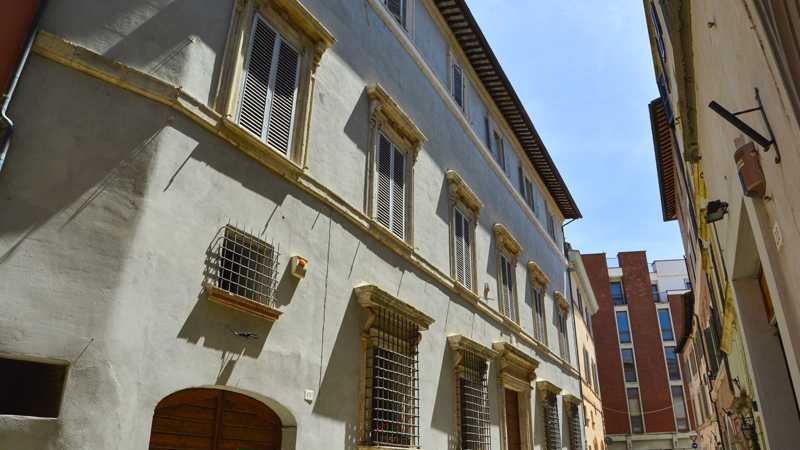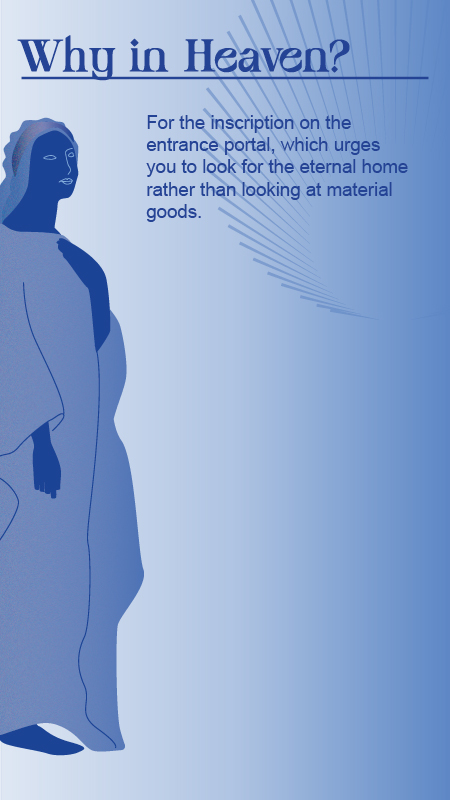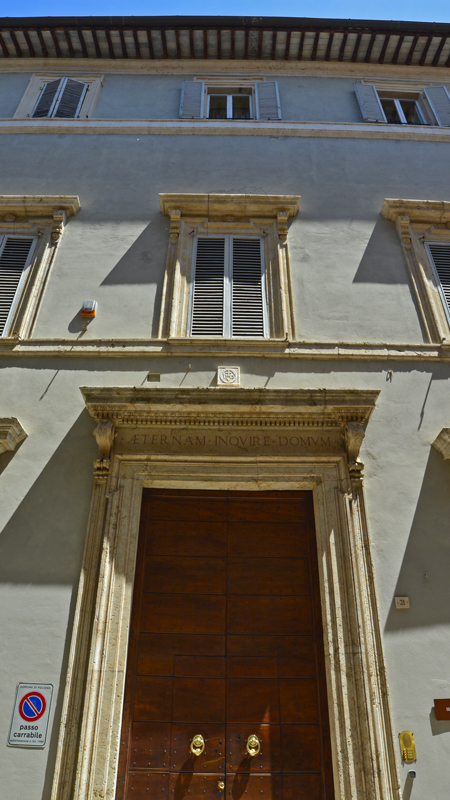This sixteenth-century palace was built on pre-existing medieval buildings. The majestic entrance is adorned with the inscription "Aeternam inquire domum". Inside, important furnishings and valuable paintings are preserved. In the red living room the "Trinci coffers" are kept, a pair of wedding coffers rich in carvings and gilding. According to the family tradition, these coffers were brought by a woman of the Trinci family who married a man of the Elmi family. Important manuscripts are kept in a monumental 17th century library. A fresco detached from the oldest part of the building and attributed to Pierantonio Mezzastris, depicts the Madonna and Child and reminds of the family’s ancient and deep devotion. Among the portraits, the most significant one for the history of the family is the portrait of Ersilia Foschi. After the death of her son and husband, Ersilia first retired to a hermit's life in a small hovel and then, in 1746, she entered the order of St. Francis from Paola and founded a new monastery of the Minim Nuns in the town currently named Porto San Giorgio.

Il progetto Divina Foligno è sviluppato nell’ambito del “programma Agenda urbana di Foligno Smart community - Comunità, Sostenibilità – Foligno 2020” intervento OT.6 INT_01 “Realizzazione della rete di attrattori culturali attraverso la realizzazione di itinerari culturali e tematici

The Divina Foligno project is promoted and financed as part of the "Urban Agenda of Foligno Smart community - Community, Sustainability - Foligno 2020 program" intervention OT.6 INT_01 "Creation of a network of cultural attractions through the creation of cultural and thematic itineraries"

Copyright © 2022 Landmark. All rights reserved.



